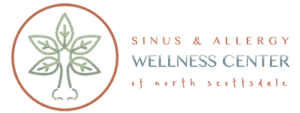5 Tips for Surviving Fall Allergies

Home > Blog > 5 Tips for Surviving Fall Allergies
5 Tips for Surviving Fall Allergies
Fall is not necessarily a season you associate with allergies. But in places like Arizona that have a year-round growing season, allergies aren’t just a spring thing. And the fall is particularly difficult because of ragweed pollen.
With over 50 million Americans suffering from allergies annually, getting relief is a constant battle. At the Sinus & Allergy Wellness Center our team understands allergies, including the specific allergens that are unique to our area. Dr. Franklyn Gergits treats your allergies to help get your symptoms under control, no matter the season.
Fall ragweed and pollen
If you have problems with pollen in the spring, it’s likely you’ll have symptoms in fall, too. It’s estimated that 75% of people who are allergic to spring plants are also affected by ragweed. As far as the outdoors go, pollen is the main culprit, and ragweed is the biggest producer of pollen in autumn. In fact, it can even last through the winter and keep your symptoms going even longer.
But your fall allergy symptoms aren’t limited to outdoor triggers.
Allergies inside and out
Considering that Americans spend most of their time indoors, and people are still suffering from allergies, there are factors inside homes and offices causing your issues as well. While pollen can be brought inside on your skin, hair, shoes, and clothing, indoor allergens -- including dust mites and mold -- can cause the same symptoms. You know the drill: runny nose, sneezing, itchy eyes, watery eyes, and coughing.
Tips for dealing with your fall allergies
As the autumn approaches, Dr. Gergits and our team want to share some tips to help you cope with your allergy symptoms.
1. Get tested so you know your triggers
If you’re not sure what your allergens are, we can help you figure it out. We perform allergy testing services in our Scottsdale office, and finding out what triggers your allergies is priceless.
To test you, we gently scratch the skin on your back or forearm and place a drop of different allergens, and then track the reactions. Redness or swelling at a site is an indication of an allergy to that substance. Your specific test results determine Dr. Gergits’ course of treatment for you.
2. Opt for immunotherapy
One of the ways to reduce symptoms and allergic reactions is with immunotherapy. We use custom-compounded sublingual drops to expose you to a low dose of the allergens that bother you, and then gradually increase the amount. As your body becomes more desensitized, your symptoms decrease, and you’ll get relief.
You take the immunotherapy at home (or wherever you are) by placing the drops under your tongue. Since it doesn’t involve needles or office visits, our patients love this option. Reactions can still occur with the drops, so Dr. Gergits carefully monitors you.
3. Know your pollen numbers
No one wants to stay inside when they can be outdoors enjoying nature. But on days where the pollen count is particularly high, this might just be what Dr. Gergits suggests. Sites like pollen.com and AAAAI.org supply you with pollen reports and forecasts to keep you as up to date as possible.
4. Keep it clean
After you’ve been outside and exposed to pollen, it’s a good idea to keep the shoes and clothing you were wearing out of the house, or at least get them quickly into the garage or washing machine. And rinsing off your hair and skin helps a lot.
Cleanliness inside your house is also important to preventing allergy symptoms -- vacuuming and dusting regularly makes a big difference.
This also goes for cleaning your sinuses, and rinsing them out with a saline solution may relieve and reduce congestion and nasal irritation. Ask Dr. Gergits what he specifically recommends.
5. Change your environment
Keep the windows closed and run the air conditioning to keep pollen out, but make sure you change your filters regularly. A good HEPA filter removes airborne dust, mold spores, and pollen.
Clean your vents regularly, too, so any dust and mold that collected in there isn’t being blown into the house by the heat or air conditioning. If you have any damp areas in your home, a dehumidifier can help prevent mold growth.
Surviving fall allergies takes the right preventive steps and treatment. Call our office in Scottsdale, Arizona, or use the “request appointment” button now to choose a day and time for an appointment.
Disclaimer:
The information provided in this article is for informational and educational purposes only and does not constitute medical advice. It is not intended to diagnose, treat, cure, or prevent any disease or medical condition. Always seek the guidance of your physician or other qualified healthcare provider with any questions you may have regarding a medical condition or treatment.
Results may vary: Treatment outcomes and health experiences may differ based on individual medical history, condition severity, and response to care.
Emergency Notice: If you are experiencing a medical emergency, call 911 or seek immediate medical attention.



